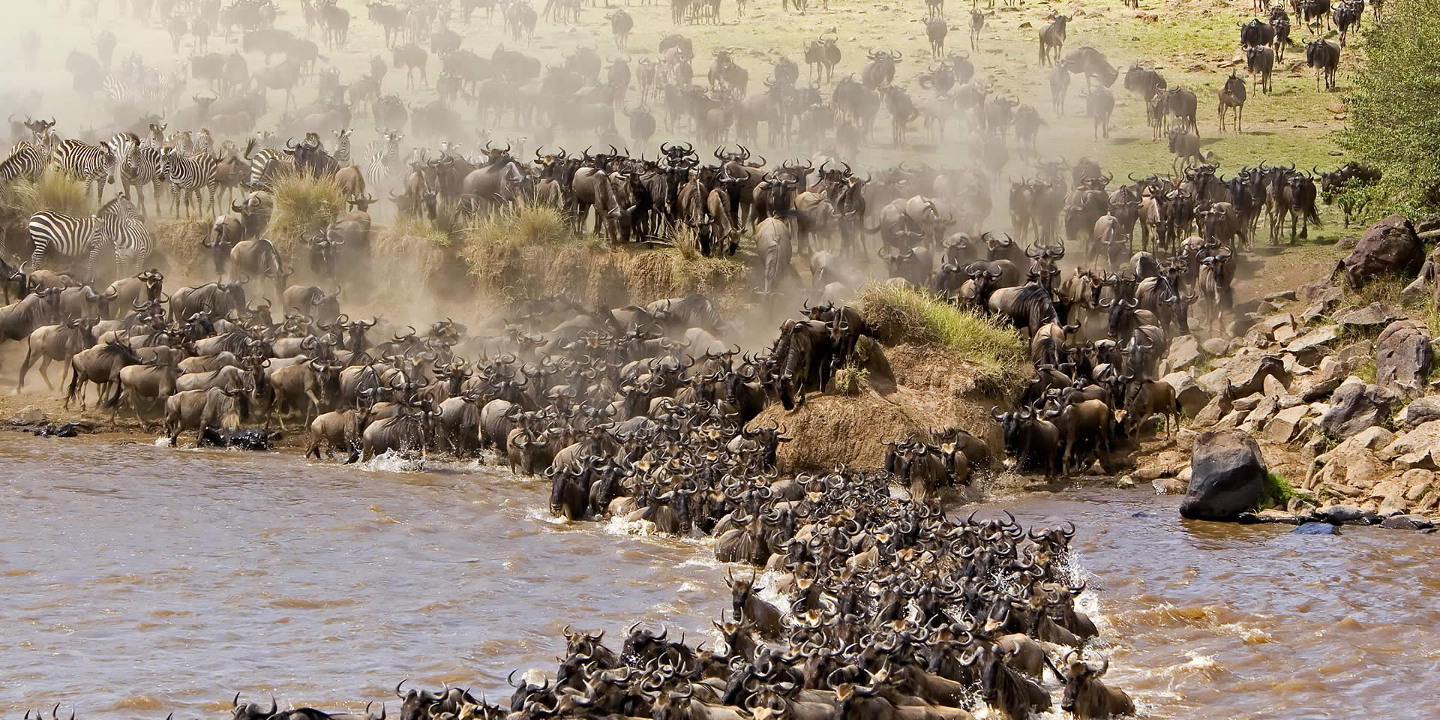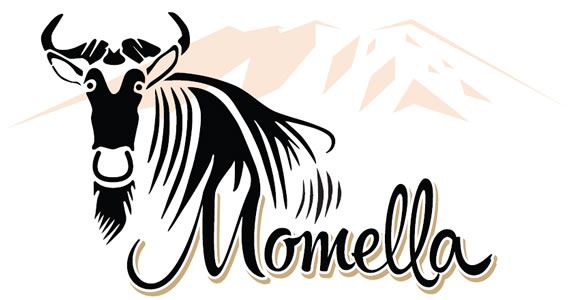
Serengeti Migration
from
$6,862.00
The Great Wildebeest Migration – the annual migration of giant herds of grazers across Northern Tanzania and Kenya is a truly spectacular event. Over two million wildebeest, zebras and gazelles move through the Serengeti and Masai Mara ecosystems in search of green pasture, in a regular pattern. This is surely one of the greatest wonders of the natural world.
All about the Serengeti Migration.
The Serengeti Wildebeest migration
December to MarchThe Southern Serengeti’s huge grass plains extend into the Ngorongoro Conservation Area. From December to March the Serengeti Migration congregates around Lake Ndutu in the Ngorongoro Conservation Area. When it reaches the area the herd splits up and spreads out leaving wildebeest herds as far as the eye can see. Ndutu Lodge and Kusini are the only permanent lodges in the area; Kusini is best towards the end of the period whereas Ndutu Lodge works throughout. Asilia’s Dunia Camp or similar accommodation is also a good option at the beginning of December and again when the herds push north in March.
April to May
The Wildebeest migration moves north into the plains of the southern Serengeti with front runners stretching out to the Western Corridor and centre of the park at Seronera. Asilia’s Dunia Camp or similar accommodation is a great option at this time as are any of the central Serengeti hotels such as the Serena or Sopa. Early herds may well have pushed up to the Grumeti River Camp, Kirawira and Mbalageti Lodge area of the Western Corridor.
June
By June there are wildebeest herds spread from the Western corridor through the heart of the park. One group tends to head West into the Western Corridor and crosses the Grumeti River before leaving the park and entering the exclusive Singita Grumeti Reserves. This herd will then head up through the Ikorongo game reserve on the Serengeti’s Western corridor before the front runners arrive into the Kogatende area in July. The other herds head directly to the north of the Serengeti, passing straight up the middle through Seronera, Lobo and up to the Bologonja river area near the Eastern border with the Loliondo reserve at Kleins. It is true to say that at this time herds can be anywhere from the Western corridor through to the Eastern side of the park. Splinter herds will break from the main herds, covering huge areas in their search for fresh grasses. We would recommend Grumeti River Camp, Faru Faru, Sasakwa, Sabora, Mbalageti Lodge and Kirawira for the Western corridor, whereas some herds will have pushed up as far as Migration camp in the Northern Lobo area. Late July will see any of the Kogatende permanent lodges having good herds, Serengeti Lamai and Sayari Camp being the places to go towards the end of July.
August through to October
From August through to October the herds are in the Northern Serengeti at Kogatende as well as in Kenya’s Masai Mara. River crossings often happen daily here. With only a fraction of the visitor numbers that flock to the Mara, Kogatende is an exceptional destination. Given that the herds are simply following local rainfall, some move north, some move south and many move in both directions in the same day. The sprawling mass moves in a circular fashion throughout these months – and as a result this is a fantastic time of year to see the herds.
November
In late October and November the herds start their second Great Migration south towards the fertile lands of the Ndutu plains where the rains will have rejuvenated the grasses since the herds were last there earlier in the year. This can be a tricky time to catch the mega herd, as it covers vast distances every day.
By the beginning of December, the herds are returning to Ndutu to calve, and the whole process is ready to start all over again.
The tour package inclusions and exclusions at a glance
+ What is included in this tour?
Items that are included in the cost of tour price.
- Transfers in both directions between the International Airport and Arusha
- One night Hotel accommodation in Arusha town on the day of arrival.
- Extended 4 x 4 luxury safari jeep with pop up roof for game viewing
- Professional safari English Speaking guide
- Entrance fees for the national parks
- Accommodation at mid range lodge and camps during the safari at full board
- Camping fees at all national park
- 18% VAT to our entrance fees
- Government taxes, VAT and service charges relating to accommodation and included meals
-What is not included in this tour?
Items that are not included in the cost of tour price.
- Flights
- Optional Tours (balloon rides USD. 690 per person), should be booked in advance
- Items of a personal nature
- Laundry Services
- A doctor for the group
- Tips and gratuities to your safari guide
- Travel insurance and other emergencies
- Visa fees and entry clearing fees
- Single room accommodations
- Liquors, beers and bottled beverages
- Photography accessories like cameras etc.
 Momella African Adventure
Momella African Adventure